Best
Overall
-
Overall: Powerful sounds and life-like resonance
-
Best Feature: Virtual Resonance Modeling Lite technology
-
TedScore™: 10/10
Best
Best Value for Money
-
Overall: Experienced and professional musicians
-
Best Feature: Available in several finishes; built with high-quality materials
-
TedScore™: 10/10
Best
Digital Piano for Home
-
Overall: Beginners and advanced pianists
-
Best Feature: Provides 32 detailed sounds and dynamic control for incredible musical expression
-
TedScore™: 8/10
If you are looking to buy a piano, choosing between digital and acoustic pianos can be very challenging, especially for a beginner.
In this post, we will determine the differences and similarities between acoustic vs digital pianos, and discuss the essential factors for consideration when purchasing an instrument. Plus, it’s fun to discover which instrument is going to be right for you!
How to Choose Between
a Digital or Acoustic Piano
Choosing between digital vs acoustic pianos is not an easy task. Not every pianist has the same needs, so the important things to consider when choosing a piano are the space you have for the instrument, noise level, price, and whether you are a beginner or an advanced pianist.

Brief History of the Piano
This revolutionary instrument was discovered in the early 1700s by Bartolomeo Cristofori from Italy. Unsatisfied with the lack of control the maestros had over the harpsichord, Cristofori decided to invent a modern piano. By doing so, Cristofori paved the way for the modern music we have today.

His masterpiece sounded quite different from the pianos now. Cristofori’s invention was a key-based string instrument that used hammers (like a modern piano) as opposed to being plucked (like a harpsichord). The original instrument was called the pianoforte and gave the pianists more control while playing.
Acoustic Piano vs Digital Piano
To help you determine what type of piano is right for you, we will go through all the details regarding the acoustic and digital pianos.
Design
What is different in terms of design between the acoustic and digital variety? Well, there are some massive differences, as you’ll soon discover…
Acoustic Piano
Acoustic pianos have retained a similar look to Cristofori’s instrument. They are beautifully designed and sophisticated, and can be pretty large too!
Acoustic pianos are sturdy and typically come in black, white, and wood colors (unless you’re Elton John, in which case you may occasionally play on a glass piano!).
Upright vs. Grand
Acoustic pianos come in two varieties: upright and grand piano.
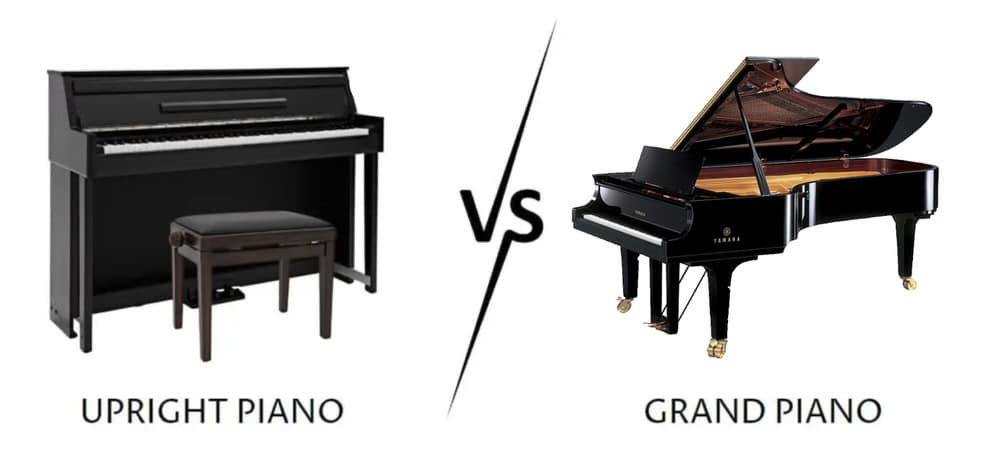
The strings in an upright piano are strung vertically, making the instrument very compact. The upright pianos are considered classics in the musical world and are often a staple in schools, homes and of course music conservatories.
The grand piano has a similar shape to the original piano invented in the early days. Compared to an upright piano, the strings are sprung horizontally in a grand piano. This type of piano vs an upright can give the player more musical colors, a bigger volume dynamic, and greater opportunities for musical expression. In other words, a grand is usually a better instrument!
What's the Difference Between a Baby Grand and a Concert Grand?
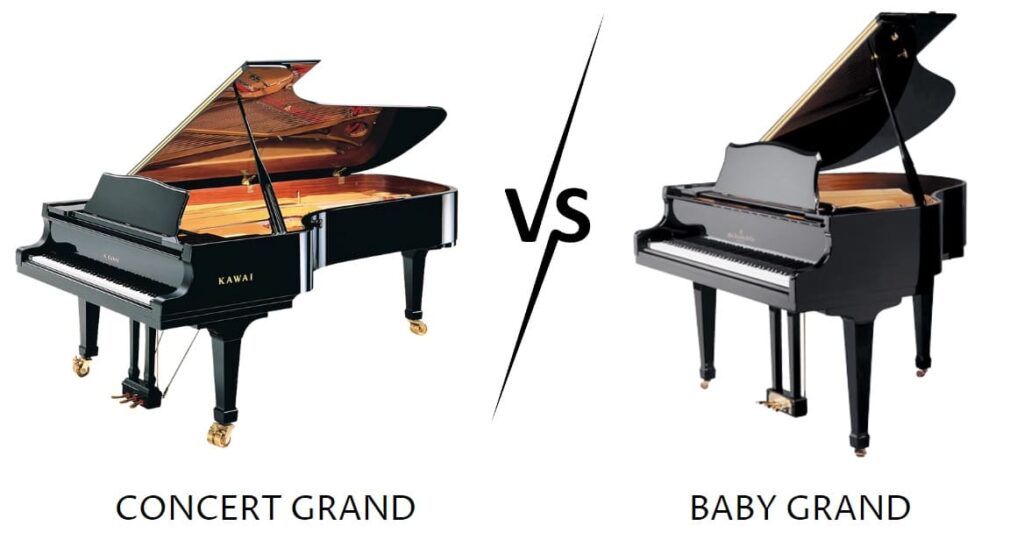
The size. A baby grand is a really, really small grand piano. A concert grand is the type of piano you see in a concert hall (hence the name) and is the biggest type of piano – usually 9 foot long. The usual question is, should I buy a baby grand piano or an upright? A decent upright is usually around the same type of cost as a baby grand, and in my opinion, having a really great upright is a better option than having a poor baby grand.
If in doubt, check out our Piano Buying Guide for more information!
Digital Piano
Digital pianos are lightweight (compared to the acoustic variety!) and compact pianos. They don’t require tuning, but they do require electricity to function. It’s designed to capture the essence and expressiveness of an acoustic piano while having recording ability. Plus, you can play them with headphones on.
Sound
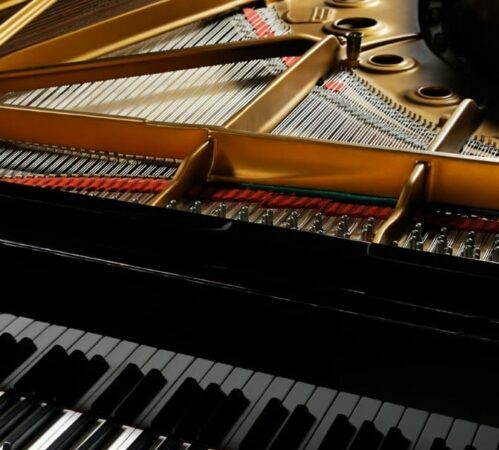

Acoustic Piano
The acoustic piano provides a better experience than the digital piano, simply because of the sound quality (and feel of the instrument). The acoustic piano produces a sound as the hammers strike the string and generate a vibration transmitted to the soundboard.
Digital Piano
A digital piano imitates the sound of their acoustic counterparts through technology. The way it generates sound is by using recorded samples at different velocities. The digital piano sensors detect the keys’ movements, producing a sound that speakers can amplify. Although such instruments don’t provide the same note nuances as acoustic ones, high-end digital pianos could be a better option than low-end acoustic pianos.
Feel
The weight of the keys can provide a different touch sensitivity and feel when playing on an acoustic and digital piano.

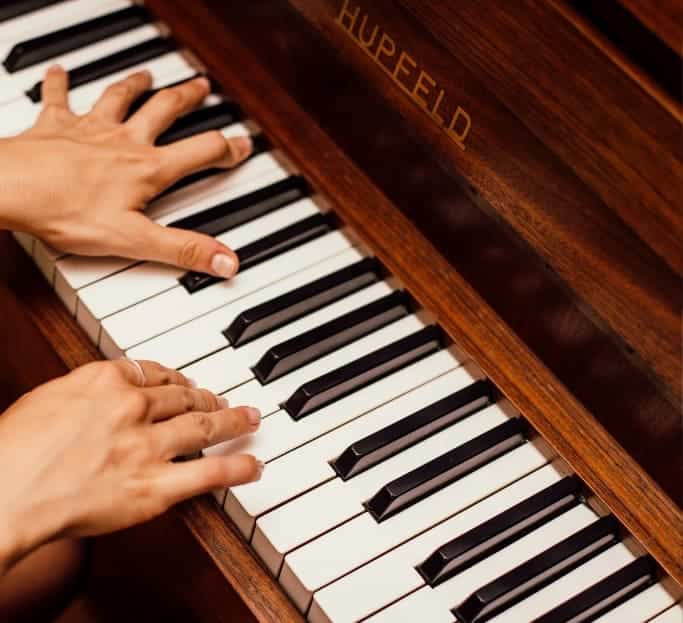
Acoustic Piano
As a pianist, you need strength to strike the piano keys on an acoustic piano. Some of the keyboard actions can be quite tough. The movements of your fingers can determine the tone of the sound you are producing.
Digital Piano
On the other hand, digital pianos have a much simpler keyboard action and are typically lighter to play. Given that the sounds they produce are digital, there is a limited number of tones that you can produce by playing. The keyboard touch sensitivity can also depend on the piano manufacturer and model. To read more about this, read our Difference Between Keyboard and Piano article.
Pedals
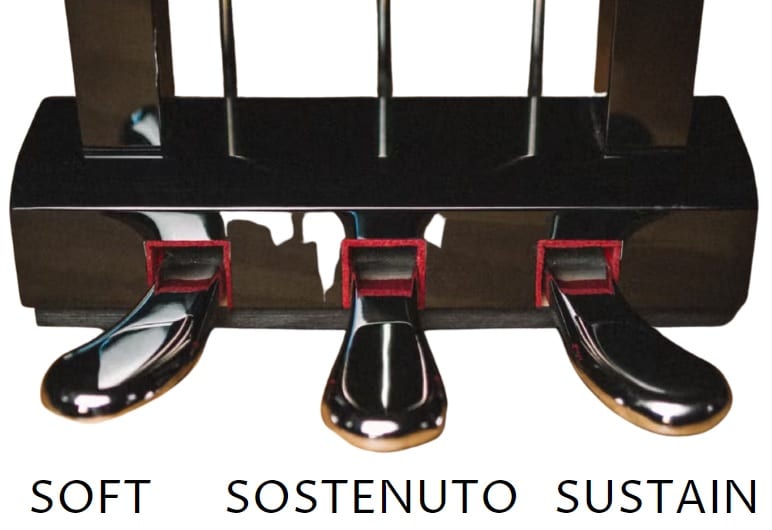
Acoustic Piano
Acoustic pianos come with three pedals: a soft pedal (called the Una Corda), a sostenuto pedal (or sometimes a Practice Pedal), and a sustain pedal.
The sustain pedal does what it says on the tine; it makes a note sustain longer. Contrary to an old wives tale, it does not make the piano louder!
The sostenuto pedal is clever in that it can sustain a select group of keys whilst leaving other notes unaffected. If you have an upright piano, however, you’re more likely to get a middle pedal which is called a Practice Pedal. This simply dampens the sound a little, making the piano more mellow and quiet – perfect for those late-night practice sessions!
The soft pedal, or Una Corda, shifts the whole keyboard action inside the piano, and the result is a quiet sound. This differs from the Practice Pedal, as the Una Corda doesn’t change the sound so much, whereas the Practice Pedal makes the piano sound muffled.
Digital Piano
Most digital pianos have an optional 3-pedal system that gives the same seffect through software. That said, some digital pianos come with only a sustain pedal, or just the sustain and the soft pedal.
Movability
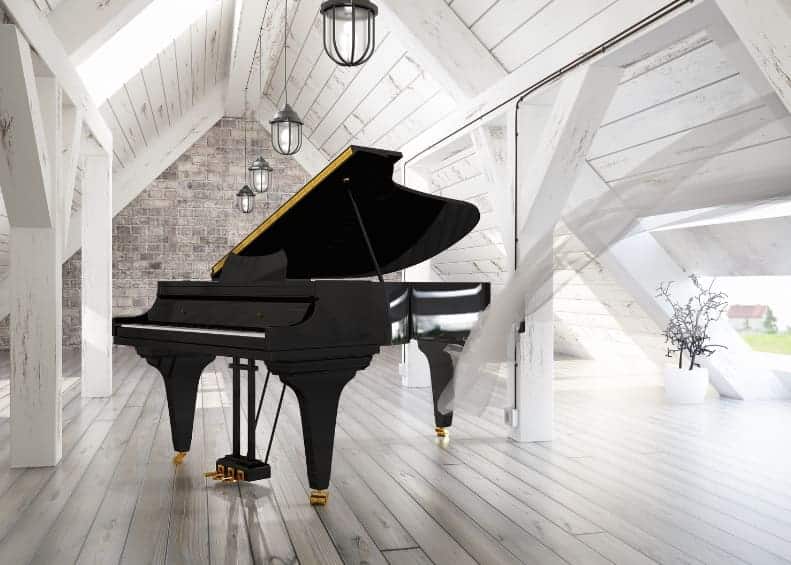

Acoustic Piano
The acoustic pianos are larger than the digital pianos. The average upright acoustic piano weighs 500 pounds, so moving can be difficult. Moreover, acoustic pianos require more space, which is something to consider if you opt for this type of piano.
A grand piano can look spectacular in your house – but you have to have room for it!
Digital Piano
Digital pianos can be disassembled, meaning you can easily move them around without too much effort. In terms of portability, digital pianos typically weigh between 75-175 pounds, making them much easier to transport.
Maintenance & Repairs


Acoustic Piano
One of the downsides of acoustic pianos is that they require more maintenance. This is because the hammers and the steel strings are very delicate and must be properly maintained. Acoustic pianos also need tuning at least twice a year.
Moreover, due to their wooden exterior, acoustic pianos are vulnerable to humidity and temperature fluctuations. Hence, its components can be affected if the piano is not in a suitable room or environment.
Don’t stick it next to a radiator – and if you can, avoid placing it near a window!
An acoustic piano can last 100+ years.
Digital Piano
Opposed to acoustic pianos, digital pianos don’t require tuning. They are very durable, so they only require maintenance once in a while. A digital piano’s lifespan depends on the instrument’s quality but typically lasts for 5-10 years, whereas a high-end digital piano can last from 10-20 years.
Cost

Acoustic Piano
Generally, acoustic pianos cost more than digital pianos. As mentioned, acoustic pianos also require regular maintenance, contributing to the price. The cost of an upright acoustic piano is typically between £/\$1,000 to £/\$10,000. However, even though acoustic pianos are expensive, they’re a good investment in the long run.
Digital Piano
Digital pianos, on the other hand, are more affordable. A lower-tier digital piano is typically priced between £/$250 and £/$500. However, as a result, their resale value is often much lower than acoustic pianos.
Digital Piano - Bonus Features
Among the many advantages of digital pianos is that they come with extra features and enable the use of accessories. Aside from the ones mentioned below, we have a dedicated article here about piano accessories.
Headphones
Advanced models of digital pianos feature a headphone jack, enabling you to plug your headphones and play anytime without disturbing others. That said, it is important to choose high-quality headphones that accurately reproduce the instrument’s sound.
If you need more help, we have a great article discussing the types of headphones that you should absolutely go and look at. But if you’re looking for a quick solution, we really love this pair of Anker Life headphones:
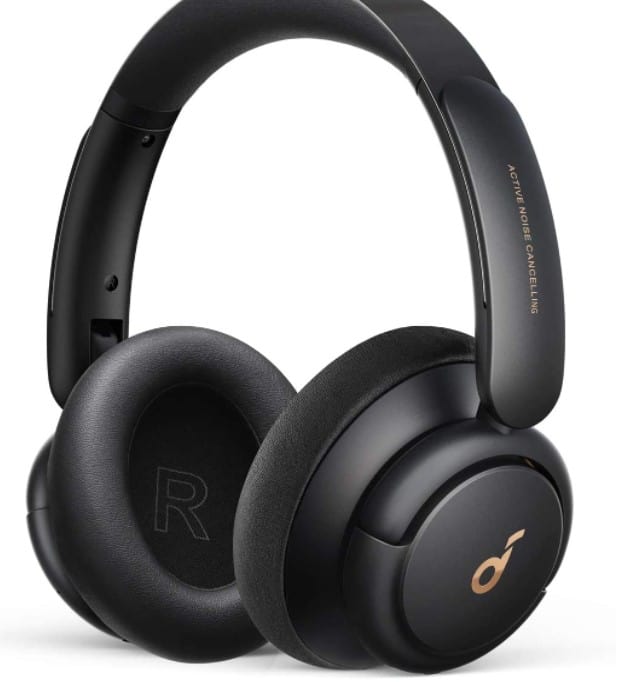
DESIGNED FOR: For new players
COMES WITH: Noise Cancelling
Anker Life Q30
When you check the price above, you’ll see there are loads of great places to buy this item. Our personal favorite is Gear4music.
It is the largest music retailer in the UK and fast becoming the most respected online music shop in the US too. Their customer service is excellent, they have competitive prices, really fast shipping, and usually have the longest guarantee.
Most professional musicians use Gear4music, so there is no reason why you shouldn’t too!
- Affordable
- Great sound quality for the price
- Wireless headphones
- Limited quality compared with more premium models
The professional musician who wrote this article combined many things,
from the product build, manufacturer’s reputation through to feedback
from other users, to create our famous TedScore™.
Varying Sounds
Digital pianos use a technology known as sampling that is implemented to record the sound made when the piano’s key is pressed. They use samples produced by an acoustic piano, whether a bright or a warm sound. Moreover, digital pianos have the ability to switch between different piano sounds and different instruments as well.
Recording Functions
Another advantage of the digital piano is that they have a built-in recorder. This way, you will be able to record yourself and hear it later so that you know what to work on or get inspired to create a musical piece.
Most digital pianos also allow you to connect them to a computer and save as many high-quality recordings as you want.
Digital Piano vs Keyboards
What is the difference between a digital piano and a stage piano?
Both digital and stage pianos have similar designs. However, the stage pianos, as the name suggests, are geared for a live performance.
The stage pianos also typically don’t have built-in speakers and require an amplification system for connection. They offer a wide range of sounds and are heavier and more robust than digital pianos, so they are a good option for touring or different venues.

What is the difference between a digital piano and a keyboard?
Due to the high cost and the required space, many students don’t begin playing on a digital piano but opt for a cheaper keyboard.
While digital pianos are intended to replicate the sound and feel of an acoustic piano, keyboards are designed to simply produce a winder range of sounds and effects, without thinking too much about a comparison with a real acoustic piano.

Keyboards are also lightweight and some don’t even feature weighted keys. It’s worth noting that some digital pianos fall into the category of electronic keyboards, but not all keyboards are digital pianos.
What Instrument to Buy
Acoustic piano
The main difference between an acoustic piano and a digital piano is the sound-producing mechanism. However, you may also come across a hybrid piano that combines the best elements and features of the instruments.
The hybrid pianos are designed to enhance performance, provide musical enjoyment, and enable the pianists to create authentic musical pieces and explore possibilities. We will talk about this a little later.
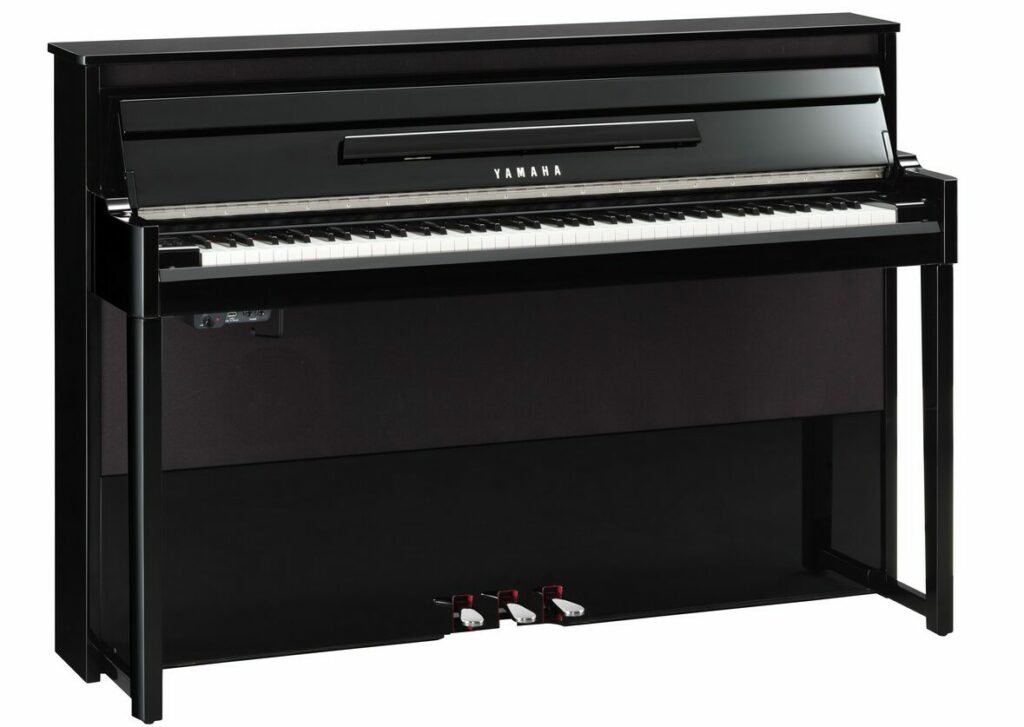
Tips for Buying an Acoustic piano
When buying a standard acoustic piano, it is important to look for the following factors:
Sound – Some pianists like bright sounds, while others more warm tones. No matter the case, it is important to find a nice acoustic piano that is round and full and fits your needs regarding sound quality. You can also ask for advice from a professional piano teacher to help determine whether the piano is the right choice.
Keys – On an old second hand piano, you may have keys that are actually made from ivory. Avoid these. Apart from that, check they are all in good working condition.
Brand – Equally important is to search for a piano from a reliable brand with a good market reputation regarding the quality of their instruments. If the brand offers a warranty, that is also a bonus. In he world of acoustic piano, the well known brands really are the best.
Space – Before placing an order, ensure you have enough space for the piano of your choice. As mentioned, such pianos are vulnerable to temperature fluctuations, so it is necessary to find the right room.
Additional Features – Make sure you grab a great, height-adjustable stool. We really love this Roland RPB-500 – it’s very comfy, fully heigh adjustable, and look great too.
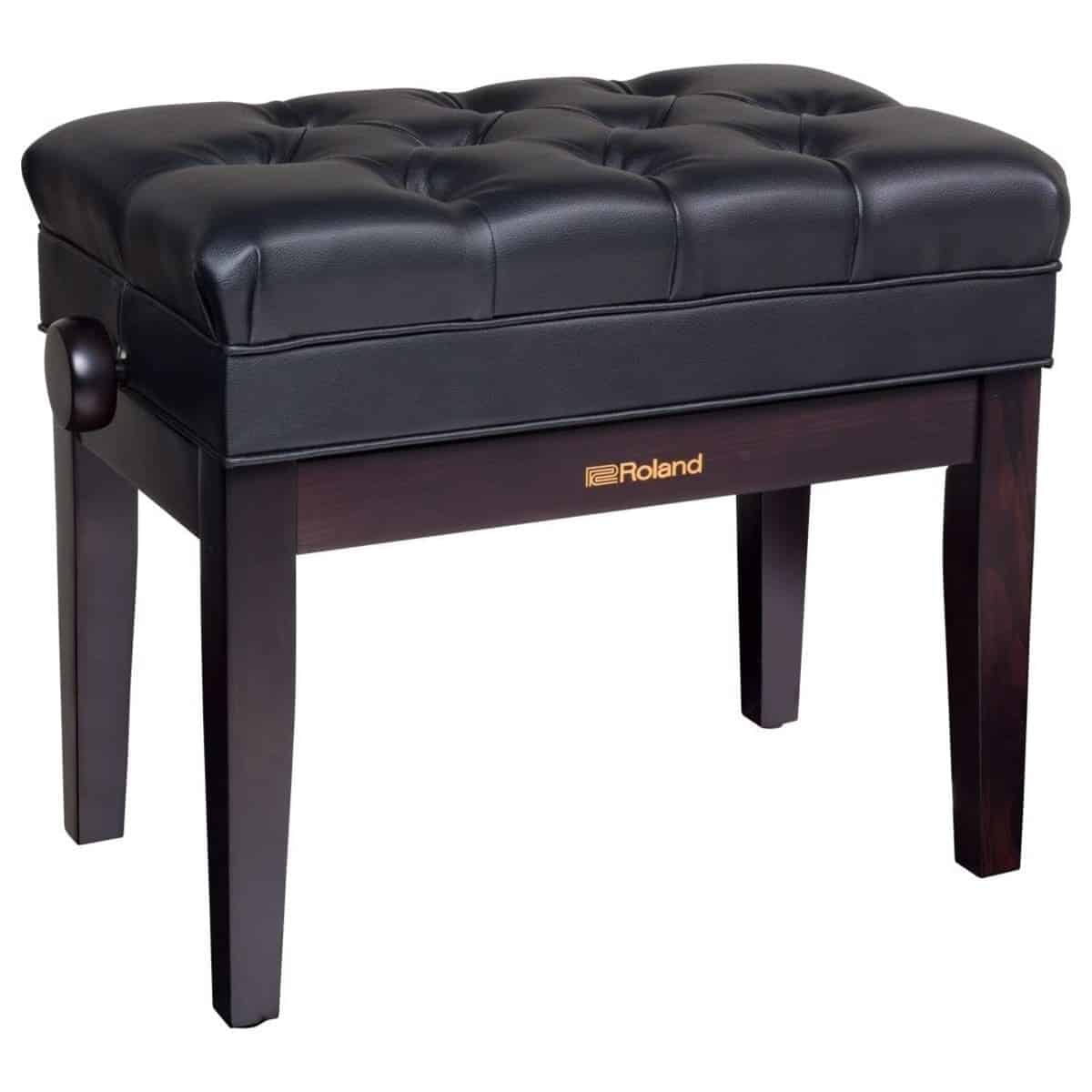
HEIGHT ADJUSTABLE: Yes
KEY CHARACTERISTICS: Durable and stable Roland bench, with a 4-inch height-adjustable mechanism and superior cushioning.
FEATURES: The vinyl seat hides a storage compartment.
Roland RPB-500RW Piano Bench
When you check the price above, you’ll see there are loads of great places to buy this item. Our personal favorite is Gear4music.
It is the largest music retailer in the UK and fast becoming the most respected online music shop in the US too. Their customer service is excellent, they have competitive prices, really fast shipping, and usually have the longest guarantee.
Most professional musicians use Gear4music, so there is no reason why you shouldn’t too!
- Stable structure and adaptable
- Superior cushioning
- Storage compartment
- Fairly pricey
The professional musician who wrote this article combined many things,
from the product build, manufacturer’s reputation through to feedback
from other users, to create our famous TedScore™.
Acoustic piano recommendations

DESIGNED FOR: Experienced and professional musicians
COMES WITH: Three pedals (soft, middle, and sustain)
FEATURES: vailable in several finishes; built with high-quality materials, providing a warm and smooth sound
Yamaha U1
When you check the price above, you’ll see there are loads of great places to buy this item. Our personal favorite is Gear4music.
It is the largest music retailer in the UK and fast becoming the most respected online music shop in the US too. Their customer service is excellent, they have competitive prices, really fast shipping, and usually have the longest guarantee.
Most professional musicians use Gear4music, so there is no reason why you shouldn’t too!
- Produces a warm and rich tone
- The piano has a solid construction
- Sophisticated design
- Not suitable for musicians on a budget
The professional musician who wrote this article combined many things,
from the product build, manufacturer’s reputation through to feedback
from other users, to create our famous TedScore™.
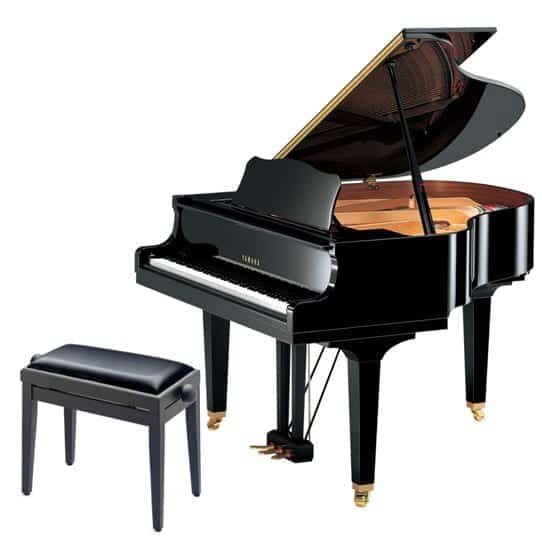
DESIGNED FOR: People Who Want A Grand Piano At An Affordable Price
COMES WITH: Gloss Ebony finish
FEATURES: Solid Spruce Soundboard
Yamaha GB1 K
When you check the price above, you’ll see there are loads of great places to buy this item. Our personal favorite is Gear4music.
It is the largest music retailer in the UK and fast becoming the most respected online music shop in the US too. Their customer service is excellent, they have competitive prices, really fast shipping, and usually have the longest guarantee.
Most professional musicians use Gear4music, so there is no reason why you shouldn’t too!
- Affordable
- Amazing sounding
- Elegant Design
- If you have a bit more budget, a slightly larger model would be a better option
The professional musician who wrote this article combined many things,
from the product build, manufacturer’s reputation through to feedback
from other users, to create our famous TedScore™.
Digital Piano
Tips for Buying Digital Piano
When it comes to a digital piano, here are some important tips to look for:
Sound quality – The piano’s tone and sound are crucial to consider whether you are a novice or an advanced player. Ensure you get a piano that has great, realistic sounds.
Key sensitivity – It is vital to look for realistic key actions, to make the feel of playing the piano as real as possible. Polyphony is another vital factor to consider when buying a piano, as it refers to the number of notes you can play simultaneously – have a high polyphony (at least 64).
Additional Factors – Among the factors to consider when purchasing a digital piano are its portability, the materials used to build it, and the built-in music libraries. Digital pianos also come at an affordable price which is excellent if you have a limited budget.
Digital Piano Recommendations
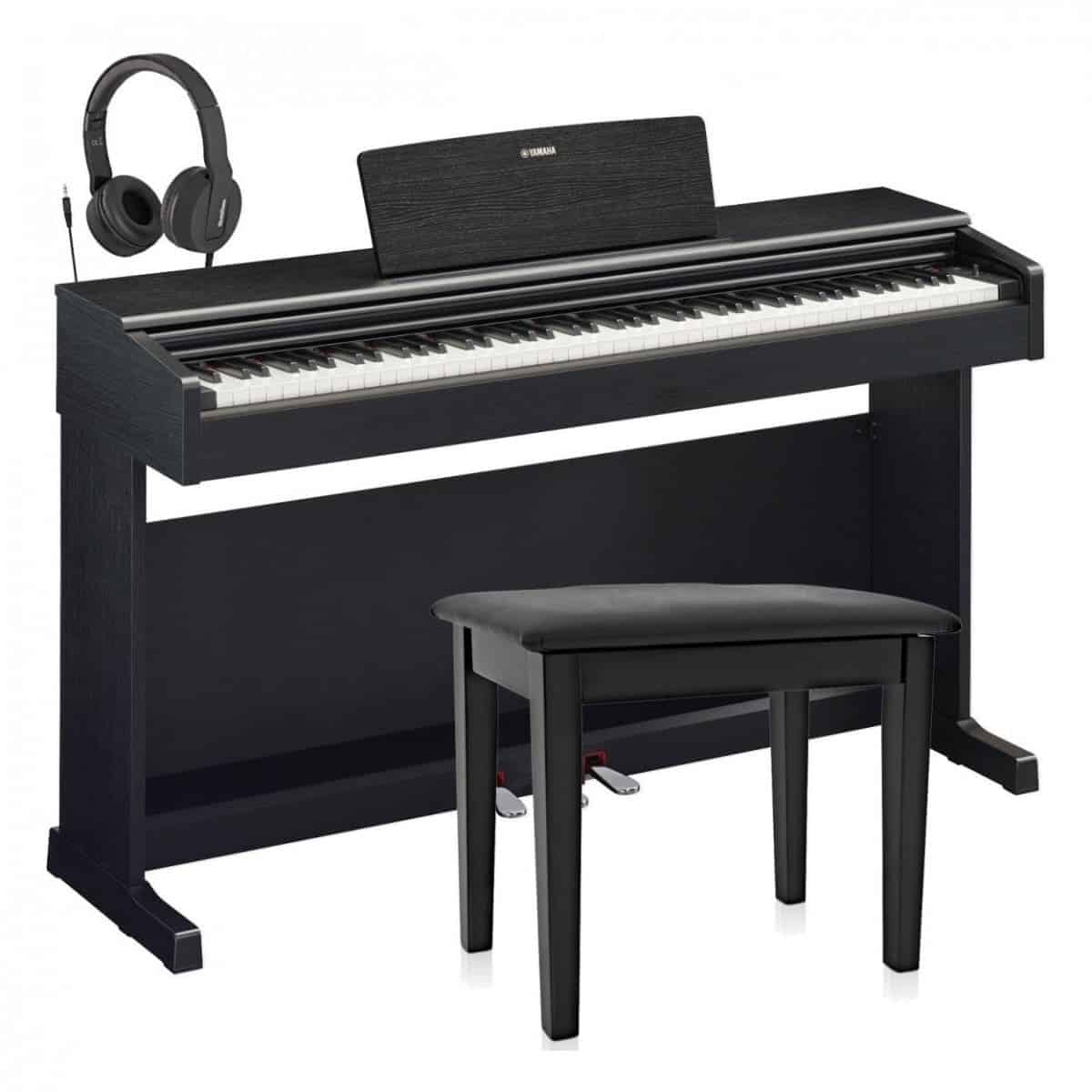
DESIGNED FOR: Powerful sounds and life-like resonance
COMES WITH: Piano stool and headphones
FEATURES: Virtual Resonance Modeling Lite technology - providing rich and powerful sound
Yamaha YDP 145
When you check the price above, you’ll see there are loads of great places to buy this item. Our personal favorite is Gear4music.
It is the largest music retailer in the UK and fast becoming the most respected online music shop in the US too. Their customer service is excellent, they have competitive prices, really fast shipping, and usually have the longest guarantee.
Most professional musicians use Gear4music, so there is no reason why you shouldn’t too!
- Elegant and compact design
- Stereophonic Optimizer and Intelligent Acoustic Control
- Three months of Flowkey Premium
- There is no Bluetooth option
The professional musician who wrote this article combined many things,
from the product build, manufacturer’s reputation through to feedback
from other users, to create our famous TedScore™.
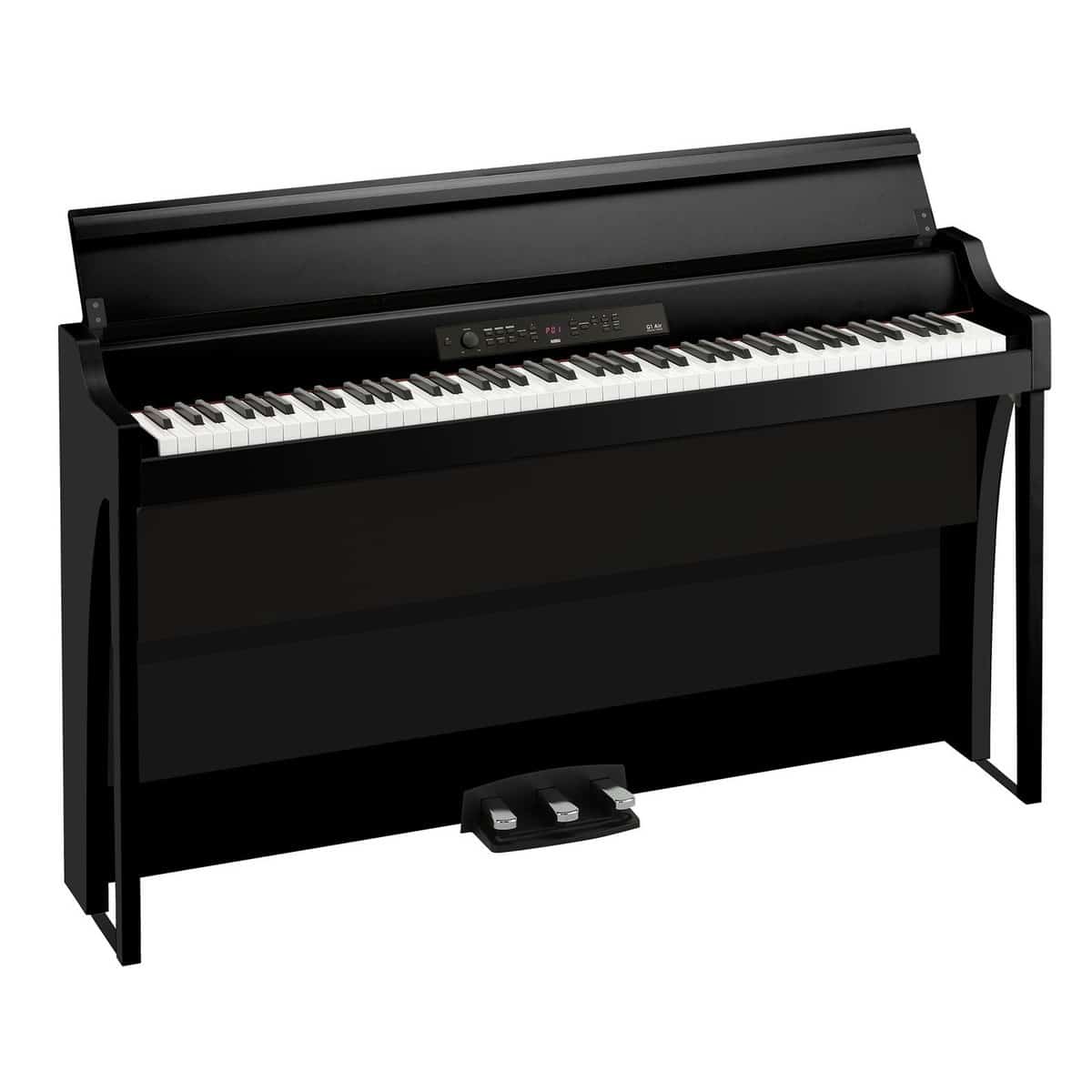
DESIGNED FOR: Beginners and advanced pianists
COMES WITH: Bluetooth connectivity
FEATURES: Provides 32 detailed sounds and dynamic control for incredible musical expression
KORG G1 AIR
When you check the price above, you’ll see there are loads of great places to buy this item. Our personal favorite is Gear4music.
It is the largest music retailer in the UK and fast becoming the most respected online music shop in the US too. Their customer service is excellent, they have competitive prices, really fast shipping, and usually have the longest guarantee.
Most professional musicians use Gear4music, so there is no reason why you shouldn’t too!
- Compact and thin design
- Bluetooth audio connectivity
- RH3 Graded Hammer Action for a responsive playing experience
- Only three reverb types are available
The professional musician who wrote this article combined many things,
from the product build, manufacturer’s reputation through to feedback
from other users, to create our famous TedScore™.
DIGITAL VS ACOUSTIC PIANOS
Summary
Now that we have compared the key differences between acoustic and digital pianos, you can now make a decision based on their characteristics and your preferences.
If the piano sound or realistic acoustic piano keys is the most important factor, buy an acoustic – but avoid a cheap acoustic piano.
If you’re interested in grand pianos, avoid baby grands – they will never sound as nice as other instruments. Get a great upright instread.
If you want real volume control, the ability to use headphones and speakers, grab a digital. Digital pianos tend to be cheaper, so spend as much money as you can on a higher quality instrument to make sure it’ll last.
FAQ's
Digital pianos mimic the sound of a brand new acoustic piano, and can be as good as their acoustic counterparts. A digital instrument is perfect for home, but not in concert halls. There you’ll find a concert pianist wants to play on concert grands.
The console digital pianos are the closest to an acoustic piano when it comes to their elements such as sound, look and touch. They also resemble the feel and look of acoustic pianos, and usually have weighted keys..
Instead of using hammers and strings to produce sound, you play a recorded sample produced by real acoustic pianos by pressing a key on the electric piano. Hence, the sounds are very detailed and similar between the two instruments. At the same time, the real piano is better in most cases, which instrument you choose depends on the pianist’s needs and musical preferences.
Digital pianos are both versatile and affordable, providing incredible value for the money. They also come with tone samples, production tools, effects and additional features that are very beneficial for creating classical music.
Acoustic pianos are known to provide a better sound. They produce an authentic acoustic sound with a warm and dynamic tone. Such instruments also offer more flexibility in composing music, but both options have advantages and drawbacks.
This depends on the musician, the instrument’s entry level and its specification. Modern pianos nowadays are just as good as acoustic pianos. Also, a cheap digital piano is better than an affordable acoustic piano. However, an expensive acoustic piano is usually a better choice than an expensive digital piano.
The upright pianos are typically mounted against walls and take up less space. Still, digital pianos are elegant and easily movable, and they also don’t require a lot of space. Hence, the choice depends on the type of sound and the music you would like to play and create.










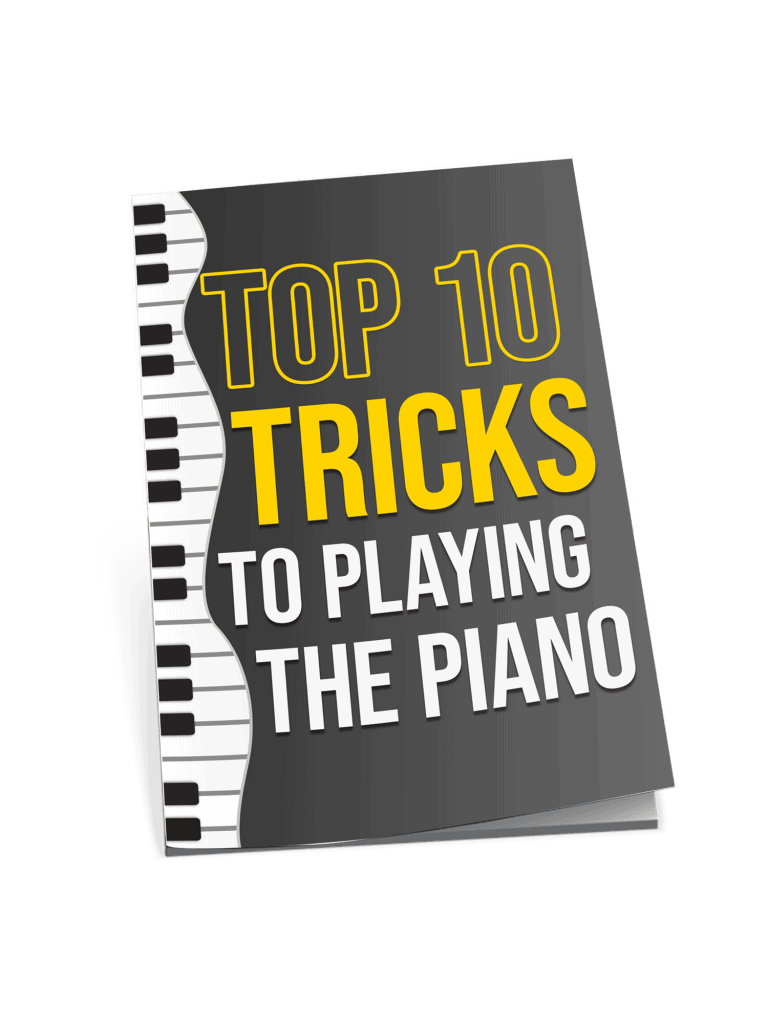
Never really thought the difference between a digital and acoustic piano was that big a deal til i read this. like the idea of digital pianos having all these cool features and stuff. Makes practice seem a bit less scary and more fun. Thanks Robert Emery for breaking it down easy to understand.
This article directed by Robert Emery did an excellent job illustrating the nuances between an upright and a grand piano. Having transitioned from a digital piano to an acoustic grand recently, I can personally attest to the profound difference in sound resonance and the overall playing experience. The section explaining baby grand vs concert grand pianos was particularly informative, shedding light on aspects I hadn’t considered prior to my purchase. It’s articles like these that truly enrich the musical journey for enthusiasts like myself.
hey, so i’ve been thinking about getting a piano to go along with my sax playing. not sure if i should get an acoustic or digital. which one’s easier for someone who’s not really a pianist? i’m leaning towards digital cause of the headphones feature. any advice?
Absolutely loved the depth in the comparison between digital and acoustic pianos, Robert Emery! As a music teacher, I find it crucial for my students to understand the differences, especially in terms of touch and sound. I always lean towards recommending digital pianos to beginners due to their versatility and the added features like recording, which can be incredibly beneficial for practice. However, nothing truly beats the authenticity of an acoustic for a more advanced player. Thanks for such a thorough guide!
Ellie, your point about digital pianos being advantageous for beginners for practice is well-taken. However, it’s also worth mentioning that acoustic pianos, while requiring more maintenance, offer a tactile experience that can significantly impact a student’s development of touch and dynamics.
Right on, Ellie! Digital pianos have their place, especially for those starting or needing the extra features. But you’re spot on about the feel of an acoustic piano; it’s unmatched.